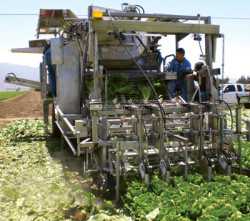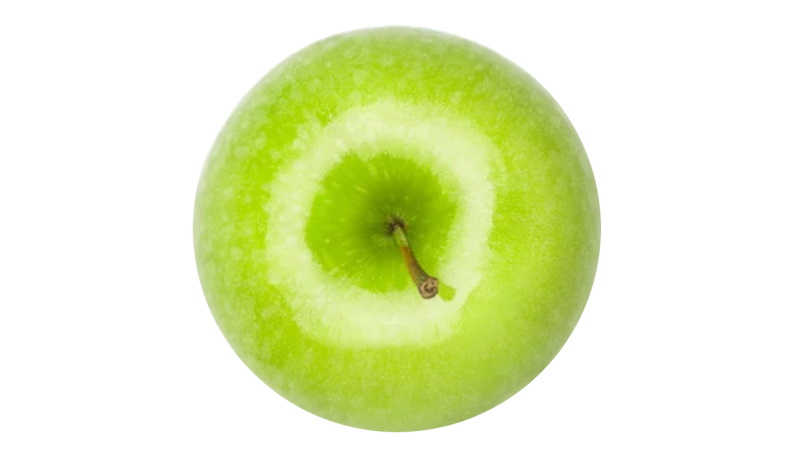Vision Systems Optimize Performance

The future is now, and mechanized harvesting is the way of the future. Just ask someone involved in the manufacture of the equipment.
Frank Maconachy, president and CEO of Ramsay Highlander in Gonzales, CA, says his company is currently working with vision systems for harvesters of leafy greens to reduce labor.
“There are new systems out there like the Plus 1 or the ICAN that can help you optimize the hydraulic performance of the harvester,” he explains. “Both platforms do the same thing. We can use the hardware or node [from either of the new systems] and download the software. These vision systems are now being used on harvesters with processors that work at high speeds, pulling this technology together and making it work.”
Return On Investment
Maconachy realizes, however, that this type of equipment isn’t for everyone. Because of the expense associated with this high-tech equipment, growers with 1,000-plus acres stand to benefit the most from its use, he says. For example, the company’s stainless steel water jet harvester, which uses high-pressure water jets to cut lettuce leaves, is being used by a few large leafy greens growers in California’s Salinas Valley. Maconachy says the unit is providing those growers with a return on investment in just one year. The machine has been available for two years.
“Our machine gauges each feed line and plant mechanically and cuts the plant right at the same level every single time,” he explains. “There are people on the machine that will sort through any disease issue. The end result is you have reduced the harvesting task from many people to just a few people.” (To read about a developing technology to harvest greenhouse peppers and other crops, see “Clever Robots” on page 11.)
When compared to hand harvesting lettuce, Maconachy says the mechanical unit has met grower expectations regarding pounds per hour, per man and has cut the labor force by nearly 50%. “The machine’s output is very close to a larger crew with people hand cutting, and we are doing it without cutters,” he says. He attributes this success to operators becoming more familiar with how the machine works, or a faster learning curve.
Streamlining Operations
By automating many of the harvesting processes, the operator becomes more efficient. The goal with mechanization, says Maconachy, is to streamline operations, increasing efficiencies.
For example, using the latest technology, growers can dial up the machine remotely and know what crop the machine has harvested and in what field. The grower can then download the data or have the information sent to his phone or computer.
“This technology is currently being used, and it now can be enhanced to work even better,” Maconachy adds. “A grower can track his machinery where- ever it is and know if it is working or not working. It is very cool stuff.”
The Latest On Lettuce
Ramsay Highlander also will be coming out with a new mechanical harvester for iceberg lettuce. Because patents for the machine have been filed, Maconachy declined to talk about specifics, but he did say the unit will be used in Europe this year and may be available in the U.S. next year.
The iceberg lettuce harvester is designed to meet European specifications. “To meet those standards, we had to work harder,” he says. “The goal was to have the harvester deliver market ready lettuce off the end of the conveyor, and we achieved that.”
Another goal Maconachy mentions is adding autonomous harvesting capabilities to machines in the field. This will enhance the operator’s ability to run the machine with even more precision.
“My vision is that before I’m done you’ll see a fully autonomous harvester in the field,” he concludes. “In other words, there will be one operator and he’ll basically drive the harvester in the field and turn on the system. From there it will operate itself. All the operator is doing is taking the ride.”










